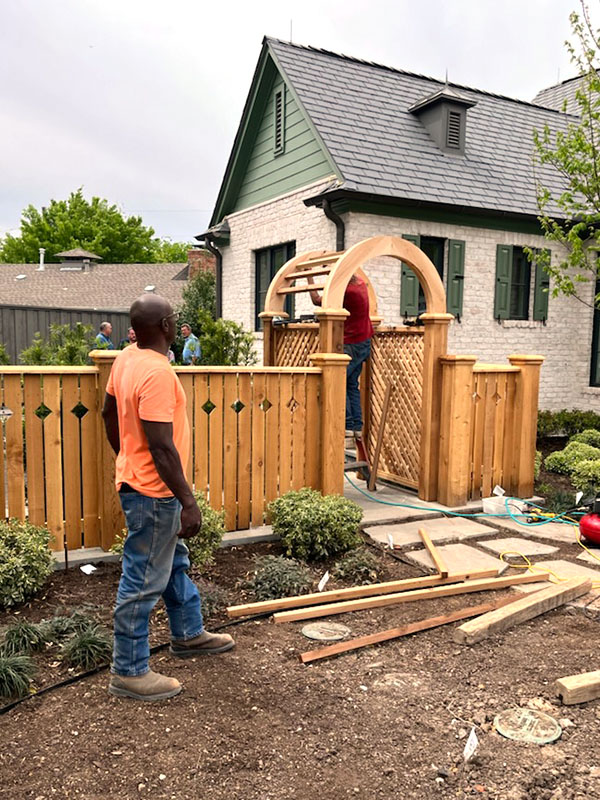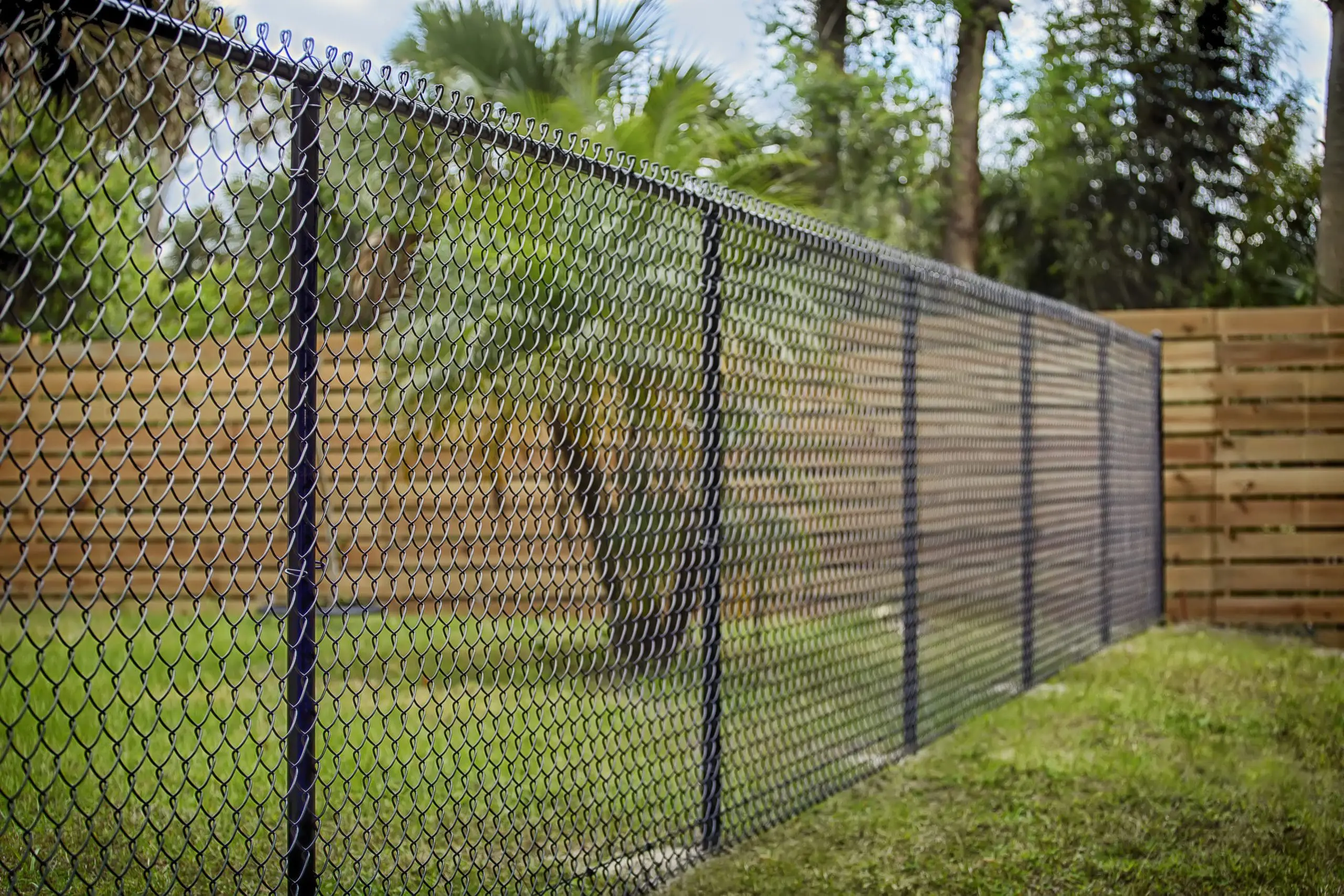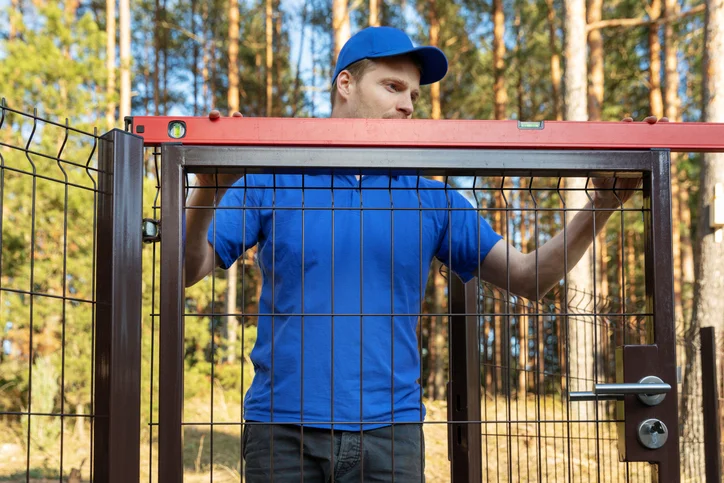Just How to Identify Common Problems That Require Immediate Fencing Fixing
It is important to detect concerns prior to they end up being larger issues when it comes to maintaining your fence. Regularly looking for indications of deteriorating wood, leaning panels, or corrosion can conserve you time and money in the long run. You may not recognize just how climate and pests can jeopardize your fencing's integrity. Allow's explore the usual indications that suggest your fence needs prompt interest, so you can keep your residential or commercial property safe and looking its ideal.
Indicators of Rotting Wood in Wooden Fences
Have you observed your wooden fencing looking a little bit shabby? It may be time to examine for indications of rotting wood if so. First, examine the base of the posts and panels for soft spots. If you continue the wood and it really feels mushy or crumbles, that's a clear sign of rot. Next, seek staining or dark areas on the wood-- these commonly signal wetness damages. Take note of any kind of peeling paint or surface, as this can reveal the wood to further degeneration. Furthermore, a poignant, moldy scent can show fungal development. Don't fail to remember to check joints and connections; if they hang or crumbling, the timber beneath is likely jeopardized. By capturing these signs early, you can avoid a lot more considerable damages and maintain your fence standing solid. Normal maintenance is essential to extending the life of your wooden fencing.
Leaning or Tilting Fencing Panels
If you've discovered your fence panels leaning or turning, it's essential to recognize what triggered it. This issue could show underlying architectural damages that requires your interest. Let's check out the common reasons and the repair alternatives offered to obtain your fence back in shape.

Sources Of Leaning Panels
When you observe your fencing panels leaning or tilting, it's often an indication of underlying issues that need resolving. One typical cause is inadequate drainage; extreme water can deteriorate the soil around the fence posts, deteriorating their assistance. Another culprit could be strong winds or storms that press versus the panels, especially if they're not effectively secured. Furthermore, the natural settling of dirt gradually can cause blog posts to change, causing a tilt. Bugs, like termites, can compromise the stability of wood panels, triggering them to lean also. Lastly, poor installment methods may result in panels not being firmly set, leaving them vulnerable to leaning under pressure. Address these issues without delay to maintain your fencing's stability.
Signs of Architectural Damages
Noticing turning or leaning fence panels can be startling, as these problems usually show architectural damages that needs prompt interest. When your fence begins to lean, it might indicate that the articles are changing or that the dirt around them has actually eroded. Pay very close attention to spaces in between articles or panels, as these can additionally suggest instability. deck builder. Additionally, look for cracks or splintering in the timber, which can weaken the total structure. If you see corrosion or corrosion on metal elements, it might compromise the integrity of the fencing. Remember, overlooking these signs can result in more severe damages down the line, so it's necessary to evaluate the scenario quickly and take action before it worsens
Repair Options Available

Rust and Deterioration in Metal Fences
If you possess a metal fence, you could observe corrosion and deterioration creeping in with time, especially if it's exposed to moisture. These issues not only influence the look of your fence yet can additionally jeopardize its structural honesty. To identify rust, search for reddish-brown spots or spots, which show the steel is oxidizing. Rust can spread out promptly if left neglected, compromising the fence and leading to expensive repairs.To tackle corrosion and deterioration, you ought to cleanse the affected areas with a cable brush and use a rust-inhibiting guide. Once the guide dries out, take into consideration repainting the fence with a weather-resistant paint to shield it better. Routine upkeep, such as evaluating for indications of corrosion and touching up paint as required, will certainly help expand your fence's life expectancy. Resolving these issues promptly ensures your metal fence stays solid and aesthetically appealing for many years to come.
Fractures and Splits in Plastic Fencing

Sources Of Plastic Damage
Plastic fencing is preferred for its longevity, yet it can still suffer from cracks and divides due to various Discover More Here variables. One significant reason is severe temperature level changes. It can weaken the material over time when plastic expands in the warm and contracts in the chilly. In addition, exposure to rough sunshine can cause UV deterioration, making the plastic fragile. Physical impacts, like unintended crashes or hefty branches, can likewise produce fractures. Poor installation or using low-quality products can worsen these issues. In addition, age plays a function; older plastic secure fencing is extra prone to damages. Routine inspections can aid you determine these aspects before they cause substantial troubles. Take proactive procedures to ensure your fence remains undamaged and solid.
Repairing Cracks Properly
Although splits and divides in your vinyl fence can be worrying, resolving them promptly can stop additional damages and maintain the fence's appearance. Initially, analyze the dimension of the fracture. For tiny cracks, a vinyl repair service package usually includes glue that can bond the edges, giving a smooth repair. Tidy the area extensively prior to using the sticky, ensuring it sticks correctly. For bigger splits, you might need to make use of a plastic patch. Cut the spot to size, use adhesive around the sides, and press it strongly onto the split. Permit it to cure according to the producer's instructions. Regular maintenance and quick repair work can extend your fencing's life expectancy, maintaining it looking great for years to come.
Loose or Missing Fence Articles
Absent or loosened fence posts can undermine the security of your whole fence framework. It's crucial to resolve the concern quickly if you discover any type of articles wobbling or leaning. Examine for any type of signs of movement, as this can bring about more damage gradually. You can conveniently analyze the trouble by giving each article a gentle shake-- if it feels unstable, it's time to take action.For missing articles, you'll require to replace them asap to maintain your fence's stability. When you set up new blog posts, make certain they're safely anchored in the ground with concrete or gravel for added stability. If an article is loose, tighten it by including extra assistance or driving it deeper into the ground.Ignoring these concerns can lead to larger issues, like voids in your fence and even full collapse. So, more tips here watch on your blog posts and stay proactive about repairs!
Damage From Weather Condition and Natural Components
Weather and natural elements can damage your fence, resulting in various kinds of damages that call for punctual interest. Hefty rainfall can trigger timber to rot, making it weak and unpredictable. Snow accumulation might flex or break panels, while strong winds can root out fence blog posts or trigger areas to lean.If you see fractures or splintering in wood fences, it's a sign of drying out because of look at here extreme sunlight direct exposure. Meanwhile, steel fencings can corrosion if protective finishes diminish, especially in seaside or damp areas.Inspect your fence frequently after storms or severe weather condition to capture any type of damage early. Addressing these concerns promptly can save you from pricey repairs down the line. Don't wait till a tiny problem develops into a major one; remain aggressive and maintain your fence top shape to preserve both capability and curb charm.
Bug Problem and Termite Damages
When you discover indicators of parasite invasion or termite damages, it's important to act promptly to stop additional damage. Search for mud tubes along your fence or hollow-sounding timber, as these suggest termites are at job. You could likewise see tiny openings or frass, which is termite droppings looking like sawdust. If you spot any of these signs, it's time to evaluate the damage.Don' t delay until it's far too late; pests can compromise your fencing's honesty. Examine the surrounding location for beetles or ants, as they might be adding to the issue. If you think a problem, consider contacting a bug control specialist to deal with the issue.repairing and confirm or changing afflicted sections of your fencing without delay not just restores its stamina however also protects against insects from spreading additionally. Keep cautious to keep your property pest-free and secure.
Frequently Asked Questions
Exactly how Frequently Should I Inspect My Fence for Damages?
You need to inspect your fencing at the very least twice a year, ideally during spring and loss. Normal checks assist you find damages early, conserving you time and cash on fixings while maintaining your property's look and protection.
Can I Repair a Fencing Myself or Employ a Specialist?
You can absolutely repair a fence yourself if you have the right devices and skills. Nonetheless, hiring a professional warranties quality work and conserves you time, especially for complex fixings or extensive damages.
What Equipment Are Required for Basic Fencing Fixings?
For fundamental fence repairs, you'll require devices like a hammer, screwdriver, pliers, a saw, a level, and determining tape. deck builder. Depending on the fixing, you may also call for nails, screws, or substitute boards
Just How Much Does Fence Repair Work Generally Expense?
Fence fixing expenses differ commonly, however you can expect to pay between $200 and $1,500 relying on materials, labor, and level of damage. It's wise to get numerous quotes for the very best offer.
When Is the very best Season for Fence Repair Works?
The most effective time for fencing repair work is during light weather condition, generally in springtime or early loss. You'll stay clear of severe temperature levels, making it much easier to function and guaranteeing the products established properly for lasting longevity (deck builder). Noticing turning or leaning fencing panels can be disconcerting, as these problems often suggest structural damages that needs instant attention. Absent or loose fence messages can threaten the stability of your entire fencing framework. Snow accumulation may bend or damage panels, while solid winds can root out fencing articles or cause areas to lean.If you see splits or splintering in wooden fencings, it's a sign of drying out due to intense sun direct exposure. Steel fences can corrosion if protective layers wear off, particularly in damp or coastal areas.Inspect your fencing regularly after storms or extreme weather to capture any kind of damage early. Fence repair costs differ widely, but you can expect to pay in between $200 and $1,500 depending on materials, labor, and extent of damage